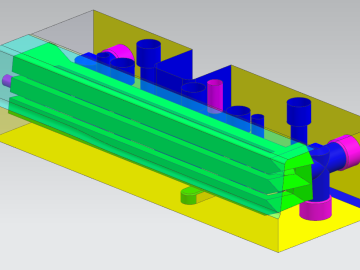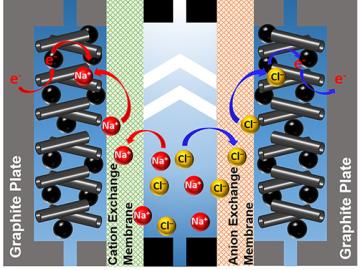
Filter News
Area of Research
- (-) Energy Science (42)
- (-) National Security (3)
- Advanced Manufacturing (11)
- Biology and Environment (11)
- Building Technologies (1)
- Computational Engineering (2)
- Computer Science (7)
- Electricity and Smart Grid (1)
- Fusion Energy (1)
- Materials (8)
- Materials for Computing (3)
- Mathematics (1)
- Neutron Science (1)
- Quantum information Science (3)
- Sensors and Controls (1)
- Supercomputing (7)
News Topics
- (-) 3-D Printing/Advanced Manufacturing (23)
- (-) Big Data (3)
- (-) Biotechnology (1)
- (-) Clean Water (4)
- (-) Grid (16)
- (-) Hydropower (2)
- (-) Machine Learning (2)
- Artificial Intelligence (1)
- Bioenergy (2)
- Biology (2)
- Biomedical (1)
- Buildings (13)
- Chemical Sciences (1)
- Composites (9)
- Computer Science (10)
- Coronavirus (3)
- Critical Materials (4)
- Cybersecurity (1)
- Energy Storage (21)
- Environment (16)
- High-Performance Computing (1)
- Materials (12)
- Materials Science (9)
- Mathematics (1)
- Mercury (1)
- Microscopy (2)
- Nanotechnology (1)
- Nuclear Energy (1)
- Polymers (5)
- Security (1)
- Simulation (1)
- Space Exploration (2)
- Statistics (1)
- Summit (1)
- Transportation (27)
Media Contacts

Researchers at Oak Ridge National Laboratory developed a method that uses machine learning to predict seasonal fire risk in Africa, where half of the world’s wildfire-related carbon emissions originate.

Researchers at Oak Ridge National Laboratory demonstrated a 20-kilowatt bi-directional wireless charging system on a UPS plug-in hybrid electric delivery truck, advancing the technology to a larger class of vehicles and enabling a new energy storage method for fleet owners and their facilities.

Researchers at ORNL demonstrated that sodium-ion batteries can serve as a low-cost, high performance substitute for rechargeable lithium-ion batteries commonly used in robotics, power tools, and grid-scale energy storage.

A novel approach developed by scientists at ORNL can scan massive datasets of large-scale satellite images to more accurately map infrastructure – such as buildings and roads – in hours versus days.

To better determine the potential energy cost savings among connected homes, researchers at Oak Ridge National Laboratory developed a computer simulation to more accurately compare energy use on similar weather days.

Researchers demonstrated that an additively manufactured hot stamping die can withstand up to 25,000 usage cycles, proving that this technique is a viable solution for production.

A team including Oak Ridge National Laboratory and University of Tennessee researchers demonstrated a novel 3D printing approach called Z-pinning that can increase the material’s strength and toughness by more than three and a half times compared to conventional additive manufacturing processes.

A new method developed at Oak Ridge National Laboratory improves the energy efficiency of a desalination process known as solar-thermal evaporation.

Scientists at Oak Ridge National Laboratory have developed a low-cost, printed, flexible sensor that can wrap around power cables to precisely monitor electrical loads from household appliances to support grid operations.

A team of scientists led by Oak Ridge National Laboratory used carbon nanotubes to improve a desalination process that attracts and removes ionic compounds such as salt from water using charged electrodes.


